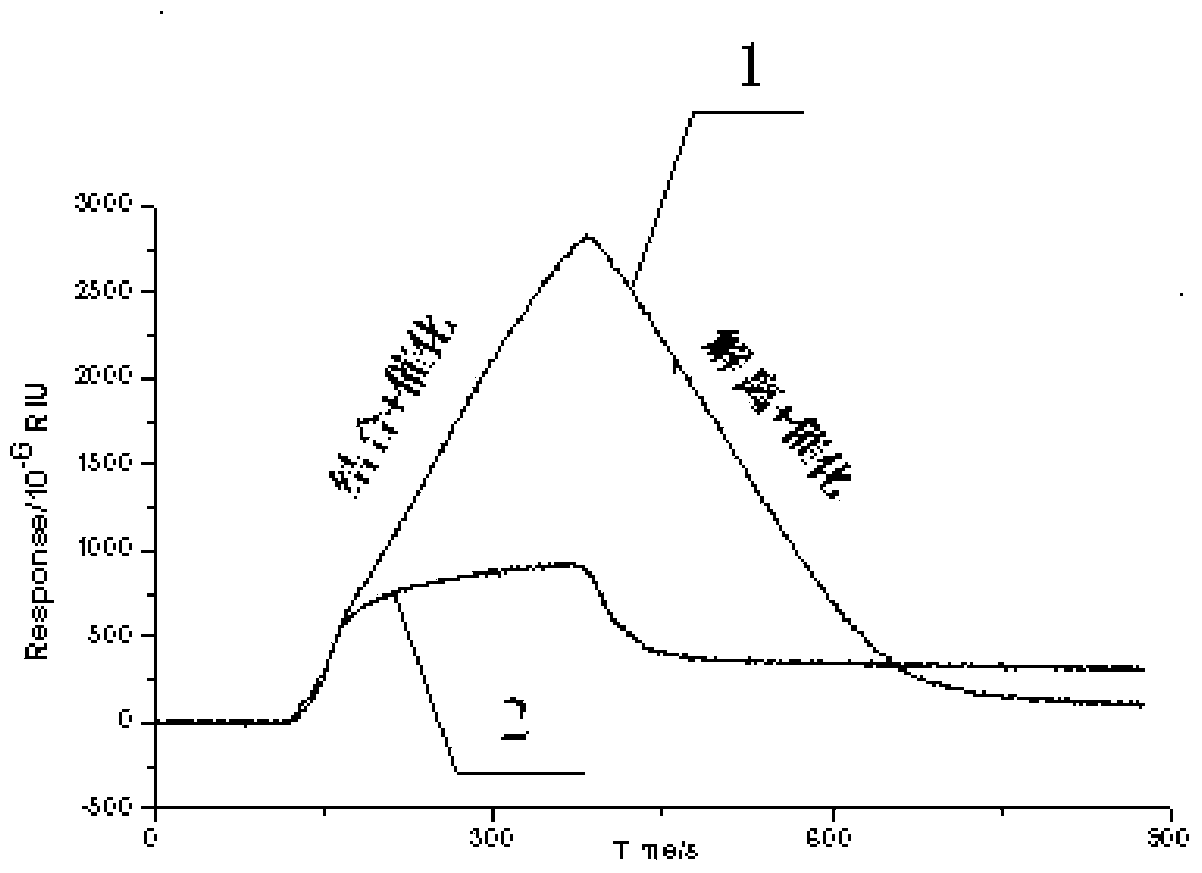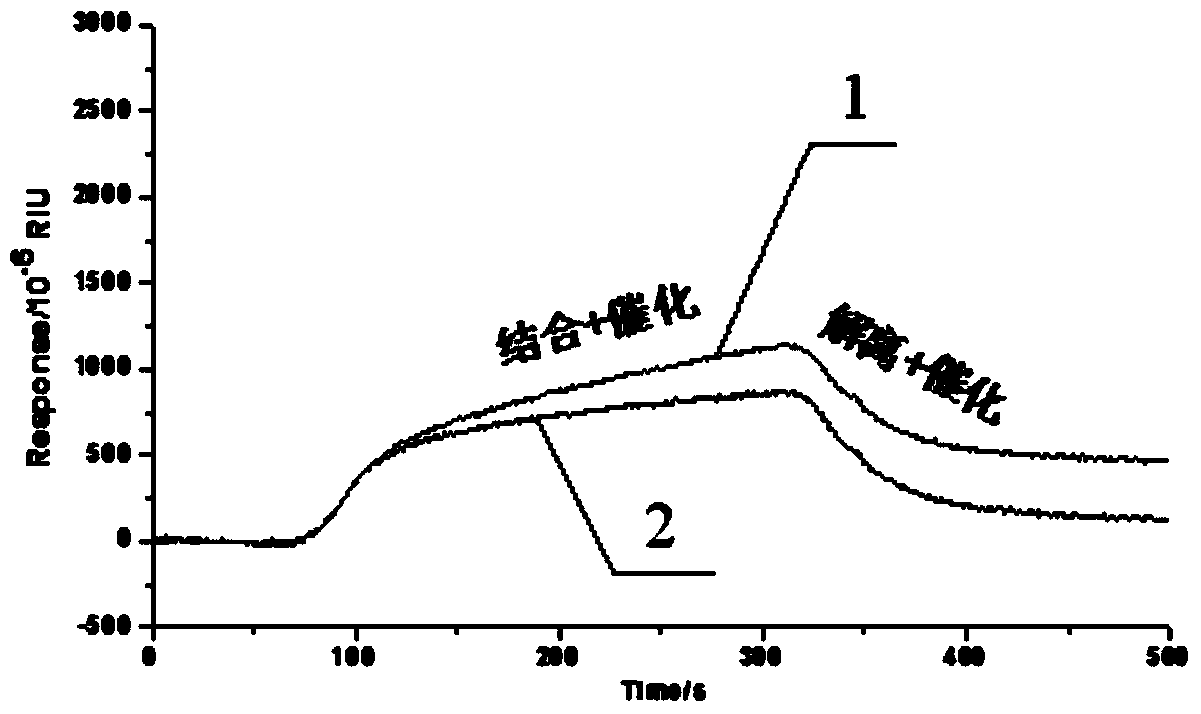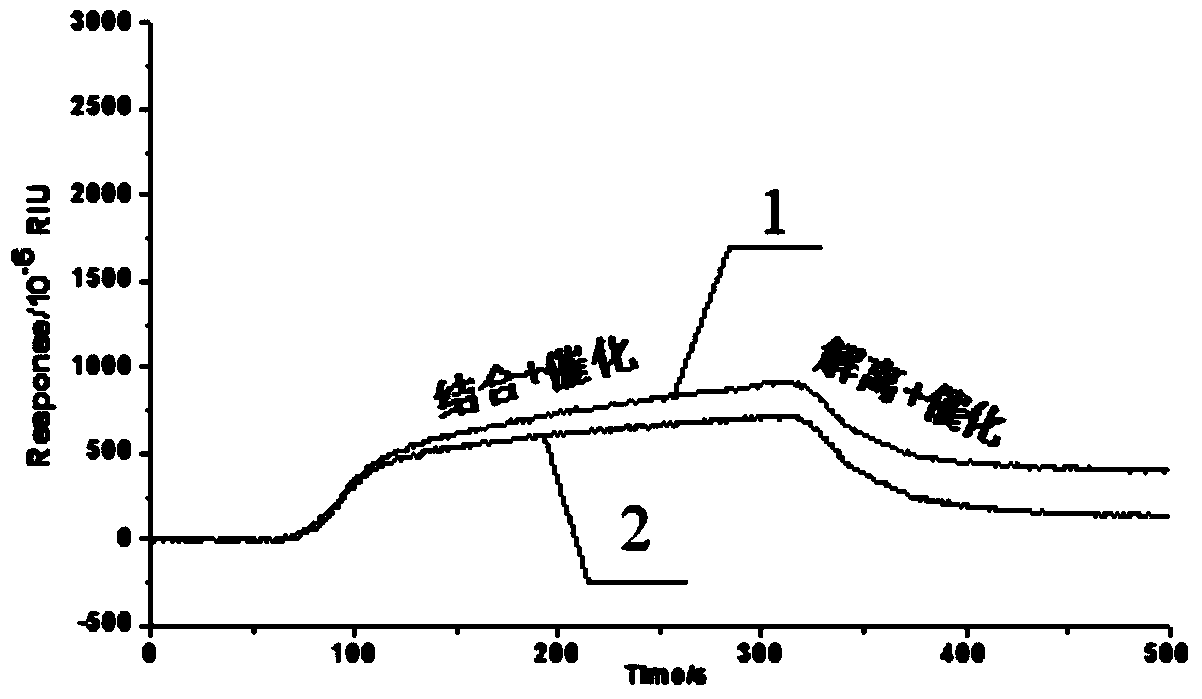Function of surfactant, and signal amplification method for SPR (Surface Plasma Resonance) detection on low molecular weight substances
A surfactant and surface plasmon technology, applied in the field of bioinformatics, can solve problems such as complex experimental processes, and achieve the effect of high experimental repeatability and easy operation
- Summary
- Abstract
- Description
- Claims
- Application Information
AI Technical Summary
Problems solved by technology
Method used
Image
Examples
Embodiment 1
[0125] Example 1 Amplification of the SPRI signal by treating the substrate small molecule 4-nitrophenyl octanoate (4-Nitrophenyl octanoate) with the surfactant Triton X-100
[0126] 1. Immobilize 100ug / ml lipase CalB on the surface of the SPRI chip, and use 200ug / ml bovine serum albumin BSA as a negative control;
[0127] 2. Prepare PBS+0.05% Triton X100 buffer;
[0128] 3. Fix the chip on the SPRI device, select the fixed positions of lipase CalB and bovine serum albumin BSA for intensity scanning, and pass the surface into PBS+0.05%Triton X100 buffer for baseline scanning, such as figure 1 Baseline shown;
[0129] 4. Dilute the substrate small molecule 4-nitrophenyl octanoate from the mother solution 10mM to 0.25mM with the prepared PBS+0.05%Triton X100 buffer solution to obtain sample 1;
[0130] 5. Inject sample 1 at a binding rate of 2ul / s, such as figure 1 Combined with the curve shown;
[0131] 6. Flush with PBS+0.05% Triton X100 buffer until the baseline is stable...
Embodiment 2
[0134] Example 2 Amplification of the SPRI signal by treating the substrate small molecule 4-nitrophenyl octanoate (4-Nitrophenyl octanoate) with the surfactant Triton X100
[0135] 1. Immobilize 100ug / ml lipase CalB on the surface of the SPRI chip, and use 200ug / ml bovine serum albumin BSA as a negative control;
[0136] 2. Prepare PBS+0.05% Triton X100 buffer;
[0137] 1. Fix the chip on the SPRI device, select the fixed positions of lipase CalB and bovine serum albumin BSA for intensity scanning, and pass the surface into PBS buffer for baseline scanning, such as Figure 5 Baseline shown;
[0138] 2. Dilute the substrate small molecule 4-nitrophenyl octanoate from the mother solution 10mM to 0.25mM with the prepared PBS+0.05%Triton X100 buffer solution to obtain sample 1;
[0139] 3. Pass through sample 1 at a binding rate of 2ul / s, and the binding time is 400s, such as Figure 5 Combined with the curve shown;
[0140] 4. Flush with PBS buffer until the baseline is stab...
PUM
 Login to View More
Login to View More Abstract
Description
Claims
Application Information
 Login to View More
Login to View More - R&D
- Intellectual Property
- Life Sciences
- Materials
- Tech Scout
- Unparalleled Data Quality
- Higher Quality Content
- 60% Fewer Hallucinations
Browse by: Latest US Patents, China's latest patents, Technical Efficacy Thesaurus, Application Domain, Technology Topic, Popular Technical Reports.
© 2025 PatSnap. All rights reserved.Legal|Privacy policy|Modern Slavery Act Transparency Statement|Sitemap|About US| Contact US: help@patsnap.com



